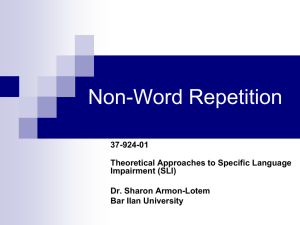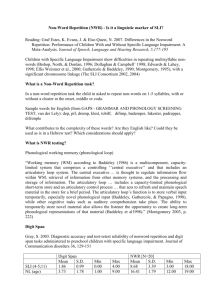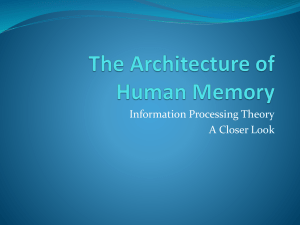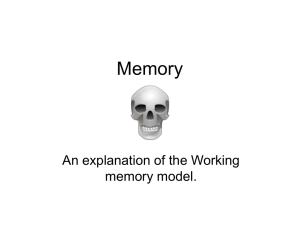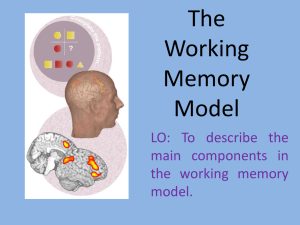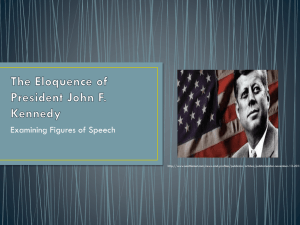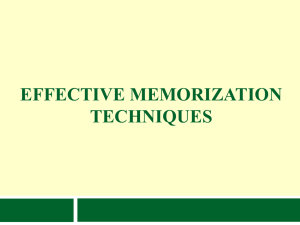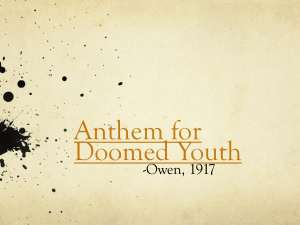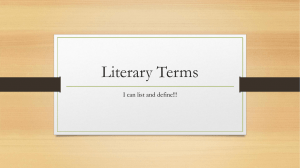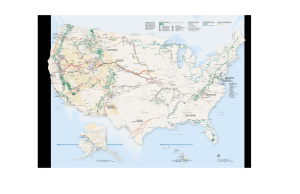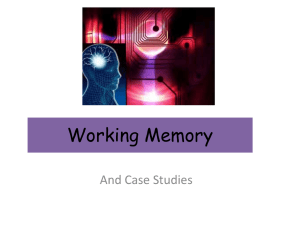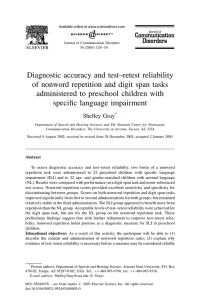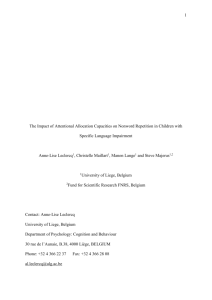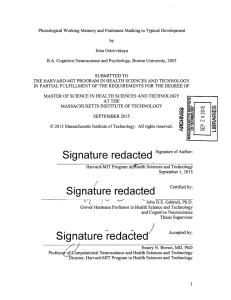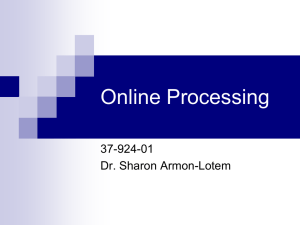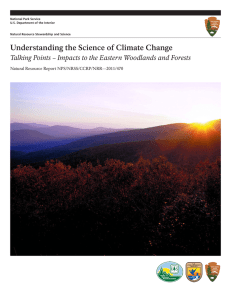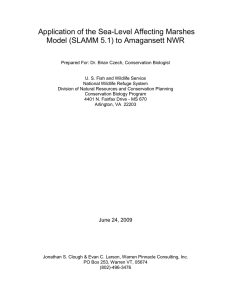Non Word Repetition
advertisement
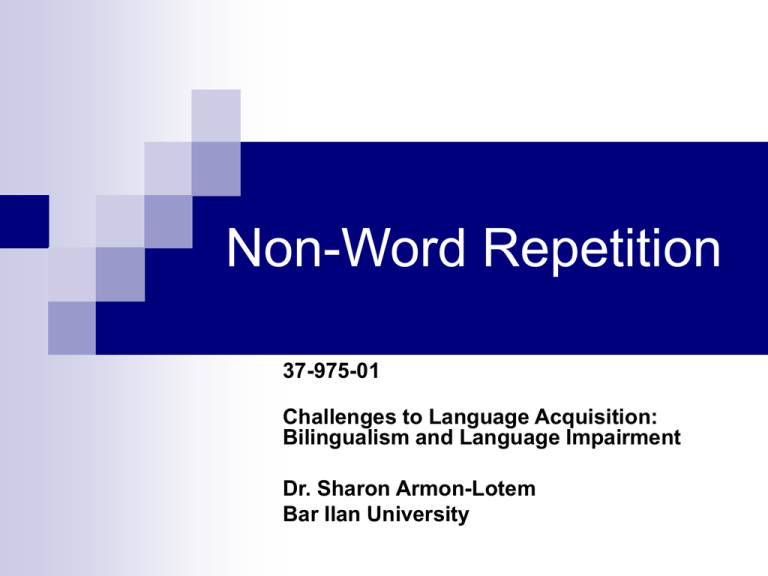
Non-Word Repetition 37-975-01 Challenges to Language Acquisition: Bilingualism and Language Impairment Dr. Sharon Armon-Lotem Bar Ilan University What is a Non-Word Repetition task? In a non-word repetition task the child in asked to repeat pseudo words and/or nonwords of 1-5 syllables, with or without a cluster at the onset, middle or coda. Pseudo word: target-like Non-word: not target-like GAPS - Grammar and Phonology Screening Test Gardner, H., Froud, K., McClelland, A. & van der Lely, H. (2006) The development of the Grammar and Phonology Screening (GAPS) test to assess key markers of specific language difficulties in young children. International Journal of Language & Communication Disorders dep, pif, dremp, klest, tobilf, difimp, bademper, fakester, padrepper, difrimple What contributes to the complexity of these words? Are they English like? Could they be used as is in a Hebrew test? Which considerations should apply? The processing involved in NWR NW >> Auditory processing >> Phonological Analysis >> Phonological storage (and learning for real words) >> Speech motor planning >> Output These can be influenced by: Hearing loss Phonotactic frequency Language dominance Stimulus length STM deficit Complexity Articulatory deficit Non-word repetition & word learning – TLD, L1 At the age of 4 (Gathercole, Service, Hitch, Adams and Martin 1999) At the age of 5 & 13 (Gathercole, Service, Hitch, Adams and Martin 1999) L2 Acquisition (Masoura and Gathercole 1999) Success on NWR reflects vocabulary size in childhood Success on NWR correlates with the rate of learning new words even to adulthood Chiat, S. (2006). The developmental trajectory of nonword repetition. Applied Psycholinguistics, 27, 552-556. ODELYA 13/12 NWR & SLI NRT - Nonword Repetition Test Dollaghan, C., and Campbell, T. F. 1998. Nonword Repetition and Child Language Impairment. Journal of Speech, Language, and Hearing Research Vol.41 1136-1146 What contributes to the complexity of these words? Are they English like? Could they be used as is in a Hebrew test? Which considerations should apply? CNRep - Children's Test of Nonword Repetition Gathercole, S. E., Willis, C. S., Baddeley, A. D., and H. Emslie H. (1994) The Children's Test of Nonword Repetition: a test of phonological working memory. Memory 2(2):103-27. (Tables from Archibald, L. M. D., & Gathercole, S. (2006)) How are they different? # of words # of Syllable Clusters Weak syllable with reduced vowels (hampent) Lexical components (morphemes) Prosodic pattern Score Test + NRT 16 1-4 - (CV structure, no late acquired phonemes) - (acoustically salient only) + - Natural for English Online (correct/incorrect) Morpho/Lexical abilities + …. Equal stress on each syllable From transcription (percentage of correct phoneme) Basic phonological processing or memory skills CNRep 40 2-5 + What is NWR testing then? Baddeley, A. D. (2003). Working memory and language: An overview. Journal of Communication Disorders, 36, 189–208. ANNA 13/12 Phonological working memory (phonological loop) “Working memory (WM) according to Baddeley (1986) is a multicomponent, capacity-limited system that comprises a controlling ‘‘central executive’’ and that includes an articulatory loop system. The central executive ... is thought to regulate information flow within WM, retrieval of information from other memory systems, and the processing and storage of information. The articulatory loop … includes a capacity-limited phonological short-term store and an articulatory control process … that acts to refresh and maintain speech material in the store for a brief period. The articulatory loop’s function is to store verbal input temporarily, especially novel phonological input (Baddeley, Gathercole, & Papagno, 1998), while other cognitive tasks such as auditory comprehension take place. The ability to temporarily store novel material also allows the listener the opportunity to create long-term phonological representations of that material (Baddeley et al1998).” (Montgomery 2003, p. 222) Digit Span Gray, S. 2003. Diagnostic accuracy and test-retest reliability of nonword repetition and digit span tasks administered to preschool children with specific language impairment. Journal of Communication disorders 36, 129-151 SLI (4-5;11) NL (age) Digit Span Mean S.D. 1.86 0.99 3.73 1.78 Min 0.00 1.00 Max 4.00 9.00 NWR [N=20] Mean S.D. 8.68 3.39 16.41 1.79 Min 3.00 12.00 Max 18.00 19.00 Linguistic Knowledge Knowledge of lexical composition Size of vocabulary Abstract representation / Poor representational system Less efficient mechanism for using lexical knowledge Speech output Archibald, L. M. D., & Gathercole, S. (2006). Nonword repetition: A Journal of Speech, Language, and Hearing .comparison of tests .Research, 49, 970–983 Subjects: 36 native speakers: 12 SLI (9;8), 12 TD age (9;9), 12 TD language (6;1). Same SES Scores on standardized test: Which one is easier? Within group: CNRep is easier than NRT Across group: The gap is more significant on CNRep What influences these results? How does NWR fairs with other tasks? Conti-Ramsden, G. (2003). Processing and linguistic markers in young children with specific language impairment (SLI). Journal of Speech, Language, and Hearing Research, 46, 1029–1037. Children with SLI are significantly worse on all four markers NWR and past tense marking yield the best results (sensitivity & specificity). Adding past tense to NWR raises the predictive ability (from 81% to 87%) While verb morphology is useful for 4-5 y.o. in English, NWR might be more promising for other languages BISLI Girbau, D., & Schwartz, R. G. (2008). Phonological Working Memory in Spanish-English bilingual children with and without Specific Language Impairment. Journal of Communication Disorders, 41, 2, 124-145. MONA 13/12 A Russian-Hebrew NWR task tested with bilinguals with TDL and SLI - rational and findings Sharon Armon-Lotem, Bar Ilan University Shula Chiat, City University COST IS0804, Amsterdam November 16-18, 2009 AMANI – NWR in Arabic 27/12
